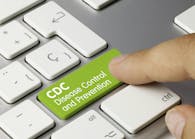The idea of providing hospital-level acute care in a patient’s home is not new. It was first piloted in 1996 at the Johns Hopkins University School of Medicine, which later trademarked the term “Hospital at Home.” What is new is recognition that supply chain (in its broadest manifestation) is integral to the success of such programs, which have been shown to lower the total cost of care, while reducing readmissions and increasing patient satisfaction.
Veteran supply chain executive Mark Scagliarini says he joined Medically Home because it sees supply chain as a strategic enabler. Medically Home works directly with hospitals and health systems to co-operate an inpatient service line in the home.
For the past three years, Scagliarini has led Rapid Response Services for Medically Home, which coordinates the provision of all things that a patient needs in order to receive high-acuity care safely at home: clinical personnel, equipment, medicine, meals, etc. In his role, Scagliarini spends 80 percent of his time sourcing and contracting with those organizations that provide the necessary resources in the home (See Figure 1).
Medically Home enables participating health systems to stand up a medical command center whereby a hospital’s own doctors and nurses can direct the care of its virtual hospital patients. This includes use of a technology platform and coordination of the the associated processes, workflows and logistics. In addition to shipping a standard supply box of products needed for every at-home admission, Scagliarini’s team makes sure there is a pool of properly trained and licensed resources able to provide care on demand in a patient’s home.
This is a switch for many organizations servicing the non-acute market. For example, most mobile x-ray companies are used to working with long-term care facilities, which schedule their tests well in advance. While the virtual care team works proactively on care plans, just like in the acute setting, a patient’s condition can change rapidly, demanding a response within hours if not minutes and sometimes requiring them to navigate unique aspects of a patient’s home, such as stairs or snow-covered pathways. Being able to communicate the need directly and immediately with the virtual care team is a great comfort for home health nurses who otherwise may not know if a message is delivered or received in a timely manner.
The contracted service provider is often responsible for bringing their own supplies (to ensure familiarity and proper training), while other times, Medically Home seeks to use products that are already under contract with the hospital or health system. According to Mark, it’s a complex logistical puzzle. A nurse cannot just run to the supply closet if he or she shows up to perform a test or procedure and a critical supply is missing. Medically Home also has a process for handling biohazard and sharps waste: a waste container is provided on site and is picked up upon patient discharge from the program or as needed. Caring for patients in their homes can provide further insight into a patient’s non-clinical needs, which can have as much or even more of an impact on a patient’s health and well-being. Medically Home supports the social determinants of health with services such as delivering nutritious meals or providing housecleaning services.
One of the biggest challenges for any organization operating in multiple states– be it a health system or a company like Medically Home – is the variation in state regulations, such as those governing pharmacies. Ideally, hospital pharmacists want to handle the medications for all inpatients, regardless of where they are being treated, but some state regulations prohibit inpatient pharmacies from delivering to the home. States also have varying regulations around what paramedics are licensed to do or the level of training required for certain advanced practice providers, such as nurse practitioners.
Much like telemedicine, providing hospital level care in patients’ homes took off during the pandemic, freeing up much needed bed capacity in the hospital. Expansion was made possible by waivers from the Centers for Medicare and Medicaid Services granted under the nation’s public health emergency (PHE) status. In May, the Biden Administration said it would give a minimum 60-days notice before ending the PHE (and in turn the waivers). As I write this, that means the waivers are good at least until August. Meanwhile, a bipartisan bill working its way through Congress- the Hospital Inpatient Services Modernization Act- would further extend the waivers for another two years.
Endnotes
1. Cryer L, Shannon SB, Van Amsterdam M, Leff B. Costs For ‘Hospital At Home’ Patients Were 19 Percent Lower, With Equal Or Better Outcomes Compared To Similar Inpatients. Health Affairs. June 2012. 36:1. https://doi.org/10.1377/hlthaff.2011.1132

Karen Conway | CEO, Value Works
Karen Conway, CEO, ValueWorks
Karen Conway applies her knowledge of supply chain operations and systems thinking to align data and processes to improve health outcomes and the performance of organizations upon which an effective healthcare system depends. After retiring in 2024 from GHX, where she served as Vice President of Healthcare Value, Conway established ValueWorks to advance the role of supply chain to achieve a value-based healthcare system that optimizes the cost and quality of care, while improving both equity and sustainability in care delivery. Conway is former national chair of AHRMM, the supply chain association for the American Hospital Association, and an honorary member of the Health Care Supplies Association in the UK.






